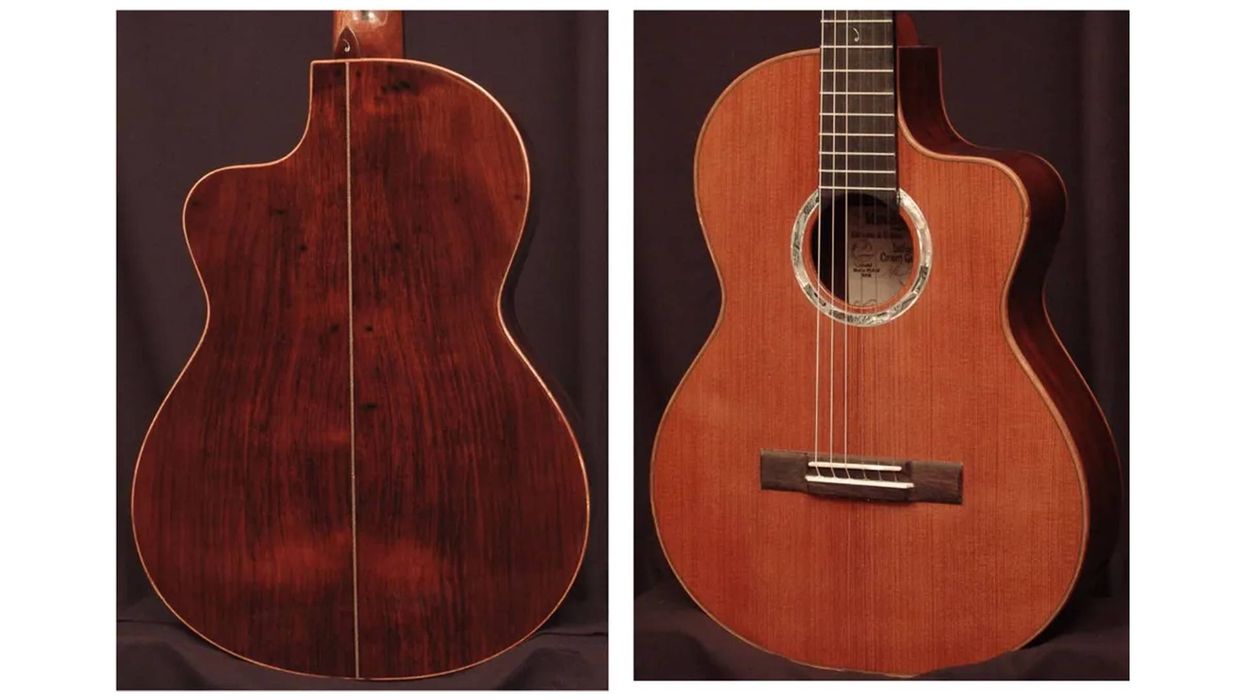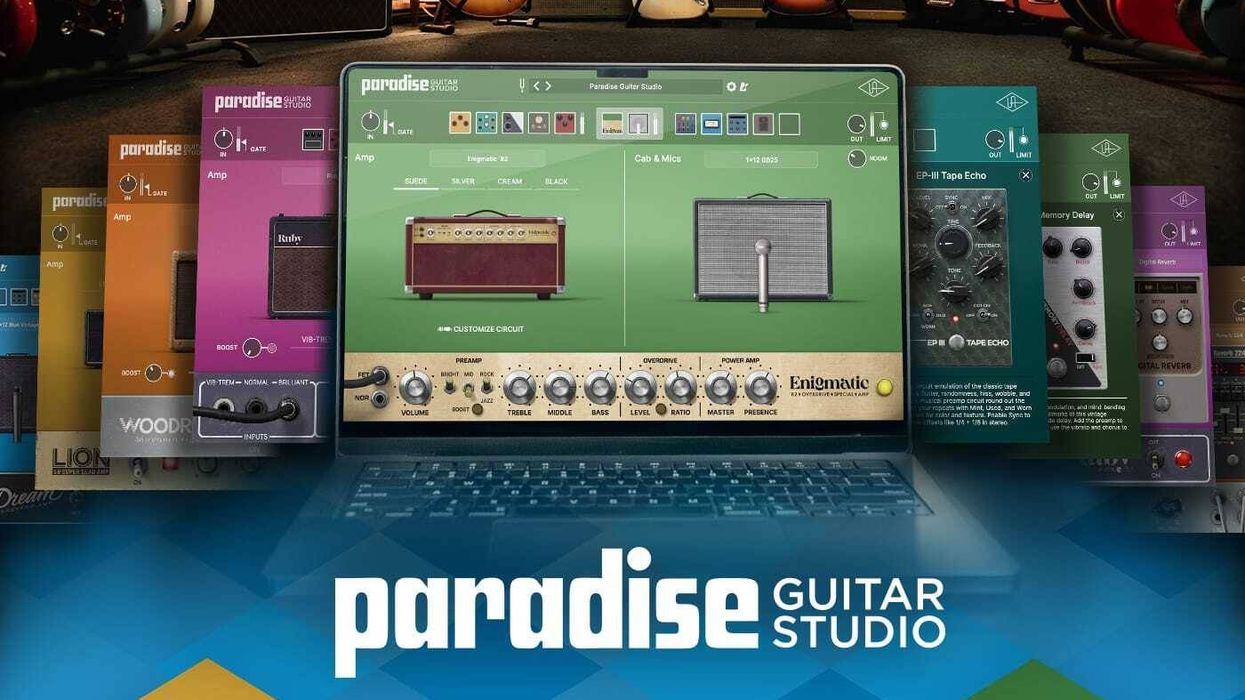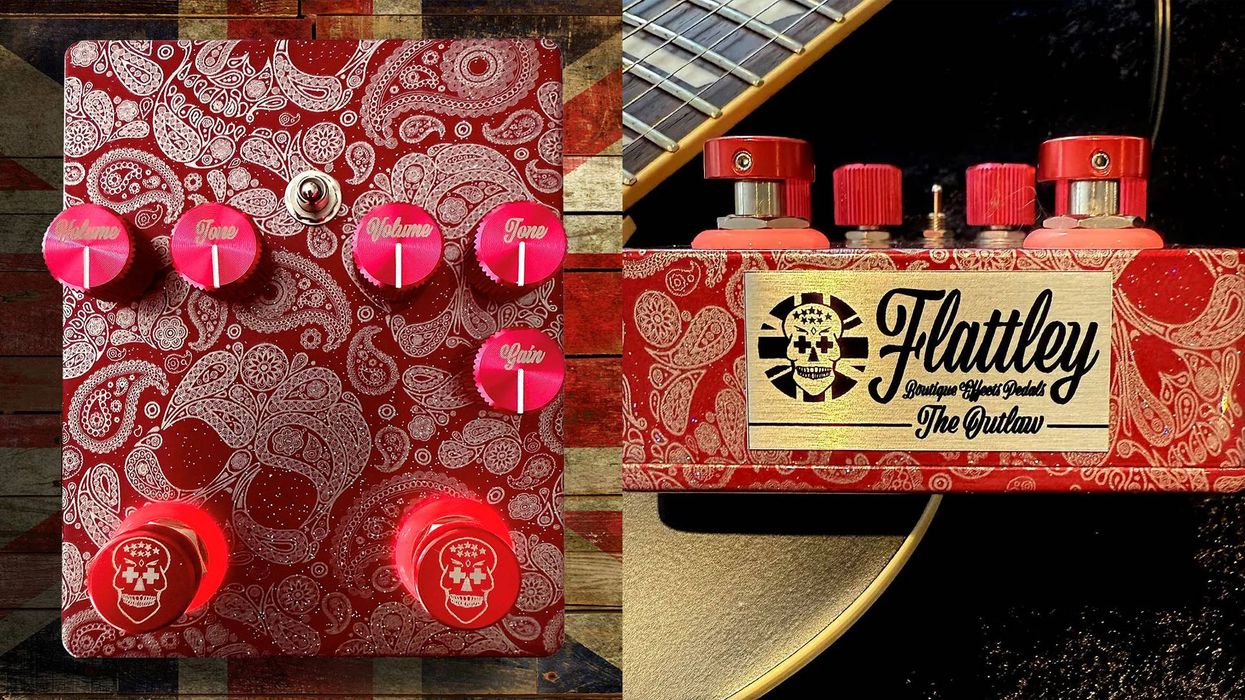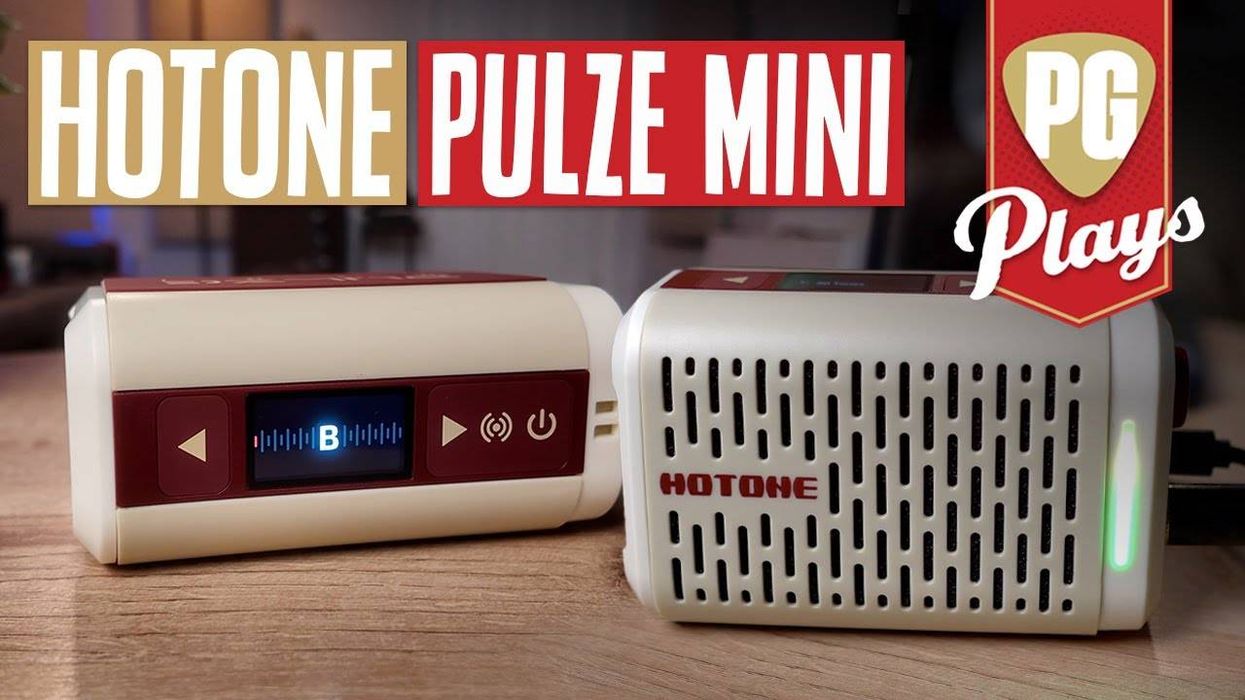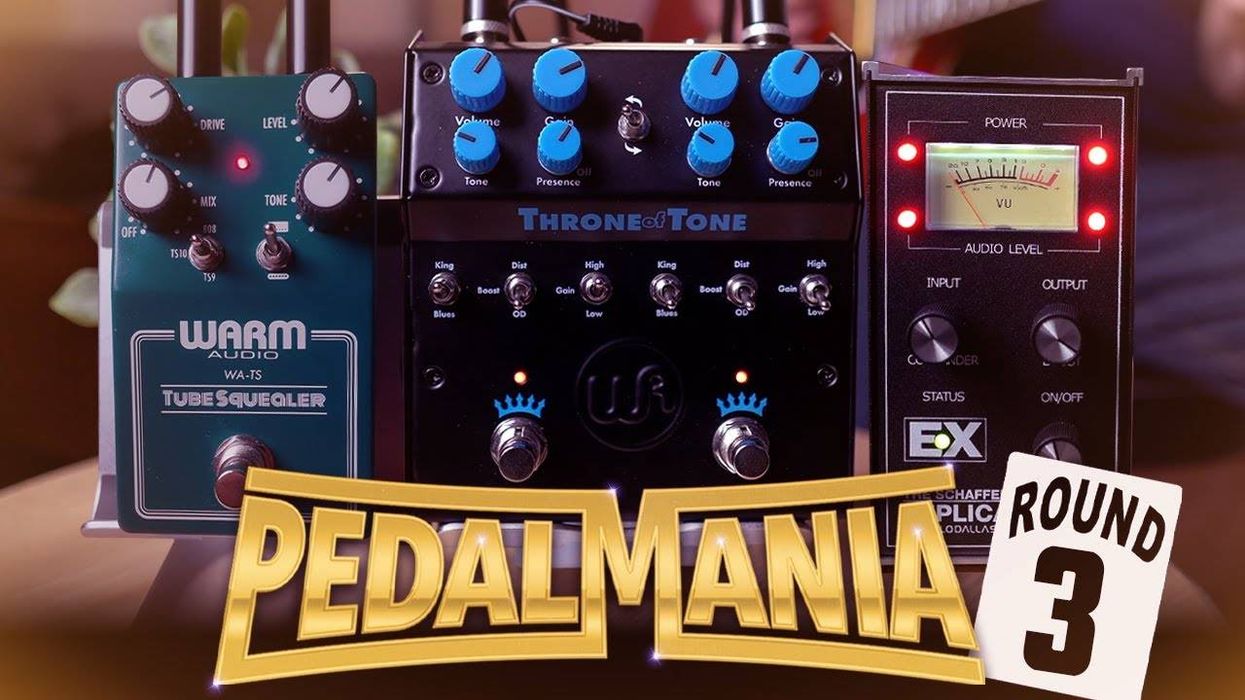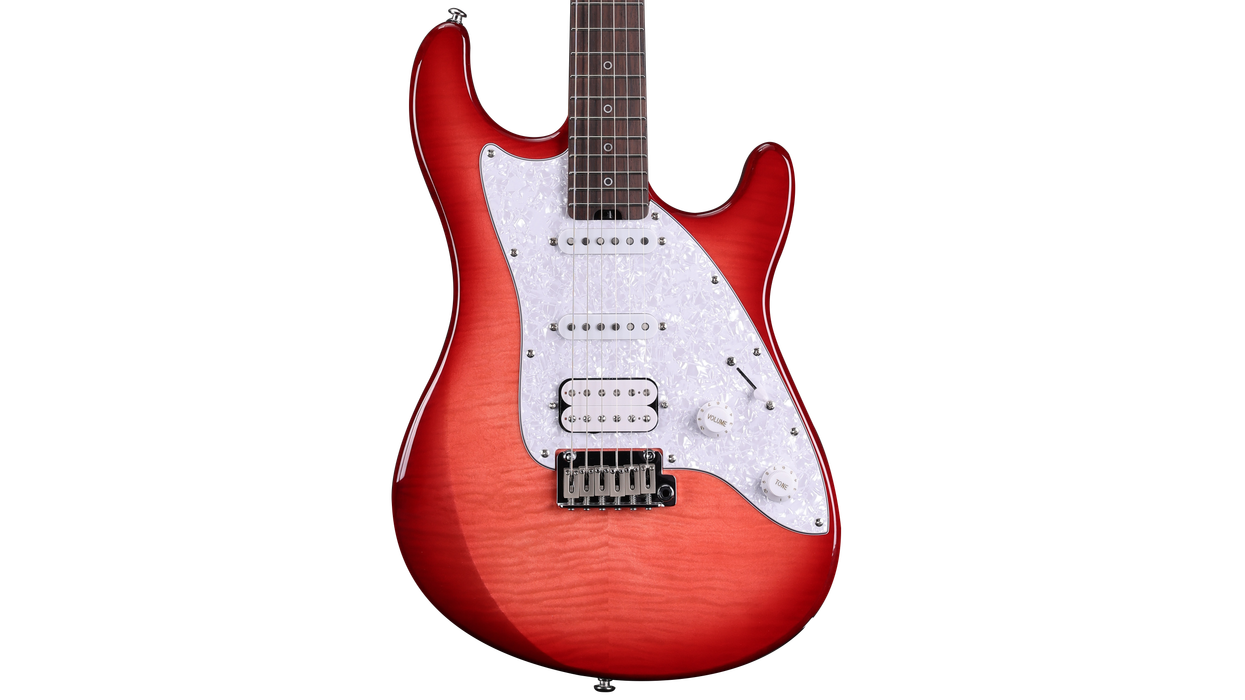Nashville, TN (November 11, 2008) - After a bit of media titilation, Gibson has revealed photos and details about its new Dark Fire guitar.

The company''s website introduces the Dark Fire guitar--a Les Paul-based, PLEK''ed multi-pickup beast--with the following statement:
"Tone meets innovation in this incredible marriage of Chameleon Tone Technology and second generation Robot Guitar technology."
Chameleon Tone Technology
So, what in the world is Chameleon Tone Technology? According to the Gibson website, Chameleon Tone Technology involves infinite tonal possibilities. The guitar comes equipped with a P90h black soapbar in the neck, a PAF-minded Burstbucker 3 in the bridge and a piezo, too. Technically, the piezo is actually 6 little piezos (one for each saddle.) The wiring of these pickups harnesses 20 different base tonal combinations. The pickup switch has a pot built into it that allows you to blend the piezo variably.

Gibson Roots
The guitar itself is basically a mahogany chambered Les Paul with a fire red nitro finish and dual black binding. The back of the guitar and neck have a satin finish. The guitar is set up with a PLEK machine and features a flowerpot inlay on the peghead that was once used on the headstock of the 1911 F4 mandolin and later on L5s.
The Dark Fire also features classic block inlays that are familiar from early 60s 335s and Custom Flying Vs, but are made out of acrylic.
Mr. Roboto
 When the first rumblings of this guitar hit the internet, many people, ourselves included, wondered if the company''s hints about groundbreaking technological advancements had something to do with digital modeling. We now know that Gibson was refering to a combination of things: the Chameleon Tone Technology, the newest version of the Robot Guitar automatic tuning system and a buffet of connection options.
When the first rumblings of this guitar hit the internet, many people, ourselves included, wondered if the company''s hints about groundbreaking technological advancements had something to do with digital modeling. We now know that Gibson was refering to a combination of things: the Chameleon Tone Technology, the newest version of the Robot Guitar automatic tuning system and a buffet of connection options.
The self-tuning system has apparently been upgraded so that it is faster and lighter. Gibson''s website states that the Dark Fire''s smaller powerhead tuners can access any preset tuning in less than one second and can also be operated by hand. The company is offering Dark Fire upgrade kits for players who bought original Robot Guitars and would like their tuning systems to be upgraded to Dark Fire quality specs.
Ins and Outs
As for the ins and outs, the Dark Fire comes equipped with a 1/4" stereo input, a 1/8" headphone out with a level control and a pilot light, two balanced 1/4" line outs, a FireWire connector for your computer and a hex connector that can isolate individual outputs from each saddle''s piezo.
As if that isn''t enough, Gibson alludes to the guitar''s ability to adapt to future advancements, such as BlueTooth compatibility for your computer or even the next generation of Robot technology.
Contest
No new product promotion is complete without a contest. Gibson''s contest for the new Dark Fire guitar involves a big press conference and performance at Times Square on December 15th. One lucky contest participant will win a trip to the event and another will win a Dark Fire Limited Edition First Run guitar. Winners will be chosen from a song they write about (...wait for it...) the Dark Fire guitar. To enter, cut your song on video, upload it to Gibson''s YouTube page and fill out the online form found here.
For more info:
Gibson Dark Fire Guitar
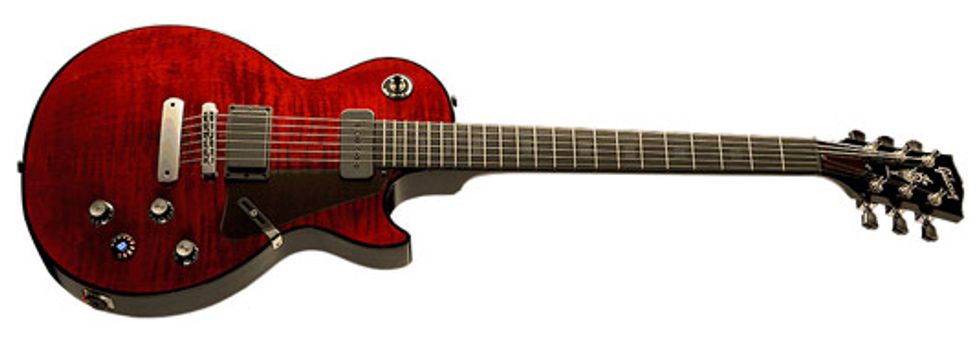
The company''s website introduces the Dark Fire guitar--a Les Paul-based, PLEK''ed multi-pickup beast--with the following statement:
"Tone meets innovation in this incredible marriage of Chameleon Tone Technology and second generation Robot Guitar technology."
Chameleon Tone Technology
So, what in the world is Chameleon Tone Technology? According to the Gibson website, Chameleon Tone Technology involves infinite tonal possibilities. The guitar comes equipped with a P90h black soapbar in the neck, a PAF-minded Burstbucker 3 in the bridge and a piezo, too. Technically, the piezo is actually 6 little piezos (one for each saddle.) The wiring of these pickups harnesses 20 different base tonal combinations. The pickup switch has a pot built into it that allows you to blend the piezo variably.

Gibson Roots
The guitar itself is basically a mahogany chambered Les Paul with a fire red nitro finish and dual black binding. The back of the guitar and neck have a satin finish. The guitar is set up with a PLEK machine and features a flowerpot inlay on the peghead that was once used on the headstock of the 1911 F4 mandolin and later on L5s.
The Dark Fire also features classic block inlays that are familiar from early 60s 335s and Custom Flying Vs, but are made out of acrylic.
Mr. Roboto
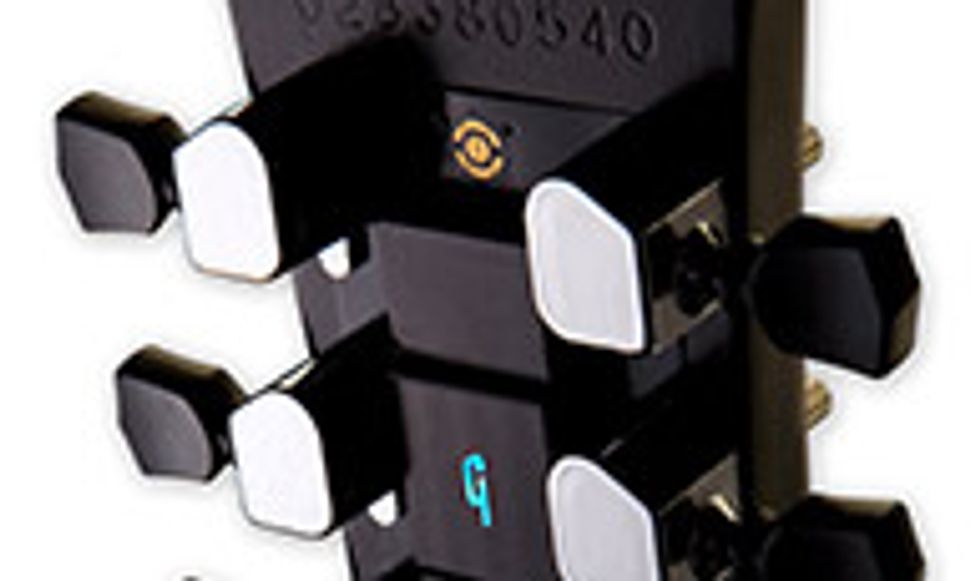 When the first rumblings of this guitar hit the internet, many people, ourselves included, wondered if the company''s hints about groundbreaking technological advancements had something to do with digital modeling. We now know that Gibson was refering to a combination of things: the Chameleon Tone Technology, the newest version of the Robot Guitar automatic tuning system and a buffet of connection options.
When the first rumblings of this guitar hit the internet, many people, ourselves included, wondered if the company''s hints about groundbreaking technological advancements had something to do with digital modeling. We now know that Gibson was refering to a combination of things: the Chameleon Tone Technology, the newest version of the Robot Guitar automatic tuning system and a buffet of connection options. The self-tuning system has apparently been upgraded so that it is faster and lighter. Gibson''s website states that the Dark Fire''s smaller powerhead tuners can access any preset tuning in less than one second and can also be operated by hand. The company is offering Dark Fire upgrade kits for players who bought original Robot Guitars and would like their tuning systems to be upgraded to Dark Fire quality specs.
Ins and Outs
As for the ins and outs, the Dark Fire comes equipped with a 1/4" stereo input, a 1/8" headphone out with a level control and a pilot light, two balanced 1/4" line outs, a FireWire connector for your computer and a hex connector that can isolate individual outputs from each saddle''s piezo.
As if that isn''t enough, Gibson alludes to the guitar''s ability to adapt to future advancements, such as BlueTooth compatibility for your computer or even the next generation of Robot technology.
Contest
No new product promotion is complete without a contest. Gibson''s contest for the new Dark Fire guitar involves a big press conference and performance at Times Square on December 15th. One lucky contest participant will win a trip to the event and another will win a Dark Fire Limited Edition First Run guitar. Winners will be chosen from a song they write about (...wait for it...) the Dark Fire guitar. To enter, cut your song on video, upload it to Gibson''s YouTube page and fill out the online form found here.
For more info:
Gibson Dark Fire Guitar

